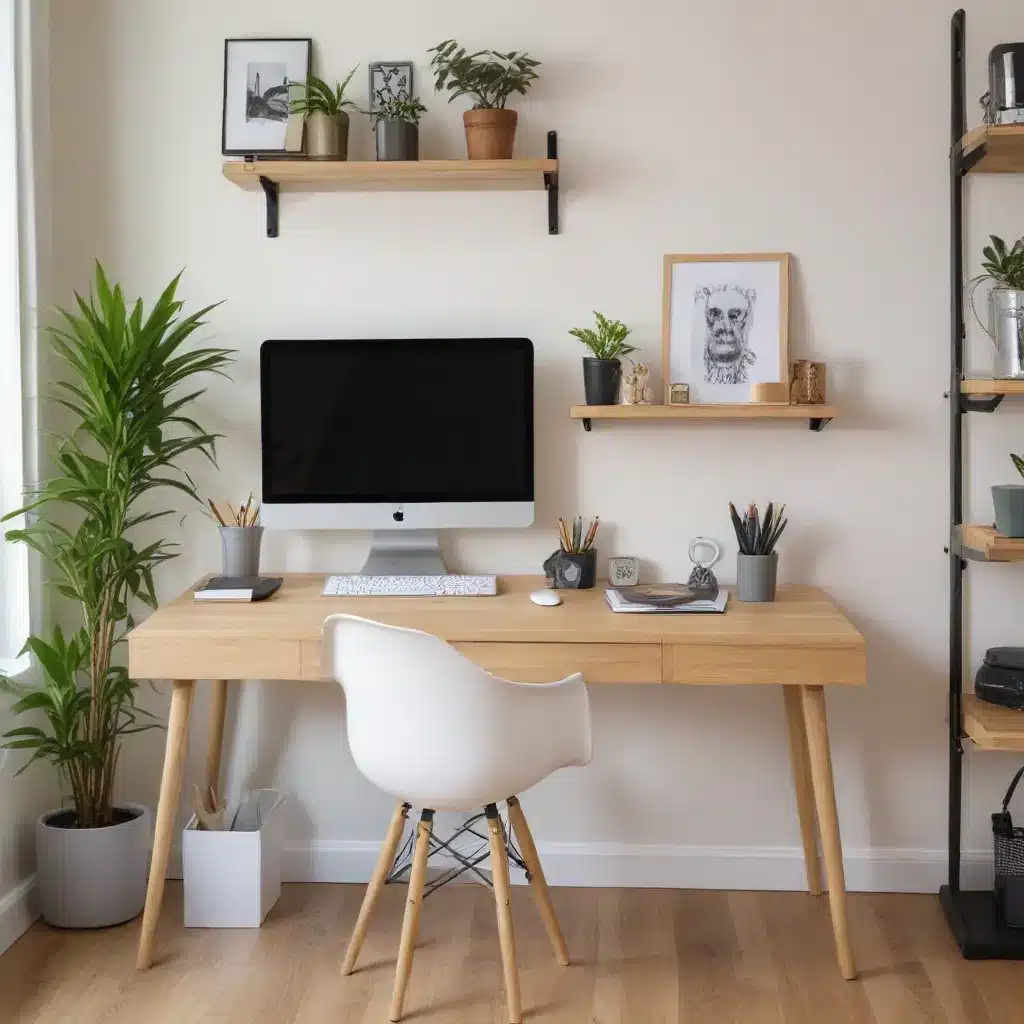
In the wake of the COVID-19 pandemic, the landscape of work and education has undergone a dramatic shift. As many organizations embrace remote and hybrid work models, and schools implement virtual learning, the need for well-designed home workspaces and study areas has never been more crucial. As an experienced home improvement consultant for Reluctant Renovator, I’m here to guide you through the process of creating the perfect home office and learning environment that caters to your needs, whether you’re a remote professional or a student navigating the new era of online education.
Workspace Considerations
Choosing the Ideal Location
When setting up your home office, the location within your living space is of paramount importance. Ideally, you’ll want to designate a dedicated room or a secluded corner that offers privacy and minimal distractions. If possible, opt for a room with a door that can be closed, allowing you to create a clear boundary between your work and personal life. For students, a quiet, well-lit area away from the hustle and bustle of the household can foster better concentration and focus.
Lighting and Ergonomics
Proper lighting and ergonomic design are essential for both productivity and comfort. Maximize natural light by positioning your workspace near windows, and supplement it with task lighting, such as a desk lamp or adjustable studio light, to reduce eye strain. When it comes to seating, invest in an ergonomic office chair that provides lumbar support and adjustability to prevent back pain and promote good posture. Pair it with a height-adjustable desk that allows you to alternate between sitting and standing throughout the day.
Minimizing Distractions
In the home environment, distractions can be plentiful and disruptive. Implement strategies to minimize these distractions, such as noise-cancelling headphones, white noise machines, or room dividers to create a sense of separation and focus. Designate specific areas for non-work activities, like a separate relaxation nook or a designated play area for children, to help maintain boundaries.
Optimal Furniture and Equipment
Selecting the Right Desk and Chair
The foundation of your home office is the desk and chair. Choose a spacious, sturdy desk that provides ample surface area for your computer, documents, and any necessary supplies. Opt for a modular or L-shaped desk if you need more workspace. Pair it with an ergonomic office chair that offers adjustable lumbar support, seat height, and swivel functionality to minimize strain and fatigue.
Integrating Productivity-Enhancing Accessories
Elevate your workspace with productivity-enhancing accessories, such as a document holder, multi-monitor setup, or a wireless charging pad for your devices. Incorporate cable management solutions to keep your desk clutter-free and organized. Consider adding adjustable shelving or storage cabinets to keep your supplies within reach while maintaining a tidy, professional appearance.
Incorporating Multimedia Tools
In the era of remote work and virtual collaboration, multimedia tools are essential for effective communication and presentations. Invest in a high-quality webcam, professional-grade microphone, and video conferencing lighting to ensure clear and engaging virtual interactions. A large, high-resolution monitor or a dual-monitor setup can also enhance your productivity and visual experience.
Designing for Remote Collaboration
Enhancing Virtual Meetings
When it comes to remote collaboration, optimizing your workspace for virtual meetings is crucial. Ensure that your background is visually appealing and free from clutter, creating a professional impression. Consider incorporating wall-mounted whiteboards or digital drawing tablets to facilitate brainstorming and creative discussions during virtual meetings.
Enabling Effective Communication
Effective communication is the backbone of successful remote work. Implement reliable and secure communication tools, such as video conferencing software, instant messaging platforms, and project management applications, to seamlessly connect with your colleagues or classmates. Establish clear protocols for virtual etiquette, such as muting microphones when not speaking and taking turns during discussions.
Maintaining Work-Life Balance
One of the challenges of remote work and learning is maintaining a healthy work-life balance. Designate specific work hours and break times, and create physical boundaries between your work and personal spaces. Incorporate personal touches to your office, such as artwork, plants, or inspirational quotes, to foster a sense of comfort and well-being.
Adaptability for Remote Learning
Creating a Conducive Study Environment
For students engaged in remote learning, designing a dedicated study area is crucial for academic success. Prioritize good lighting, minimal distractions, and comfortable seating to create an environment that promotes focus and productivity. Incorporate storage solutions for textbooks, notebooks, and school supplies to maintain organization.
Leveraging Technology for Education
Embrace the technological advancements that enable remote learning. Equip your study space with a high-performance laptop or tablet, noise-cancelling headphones for virtual classes, and reliable internet connectivity. Explore educational software, apps, and online resources that can enhance your learning experience and facilitate effective note-taking, study organization, and collaboration with peers.
Fostering Productivity and Focus
To help students thrive in a remote learning environment, encourage the development of time management skills, self-discipline, and work-life balance. Establish a daily routine and study schedule to maintain structure and avoid procrastination. Incorporate breaks and physical activity to support cognitive function and overall well-being.
By considering these workspace, design, and technological factors, you can create a home office and learning environment that caters to your unique needs and empowers you to excel in the new era of remote work and education. Remember, the key to success lies in finding the right balance between functionality, comfort, and personal expression. With a well-designed home workspace, you can unlock your full potential and navigate the challenges of remote work and learning with confidence and productivity.



